
A contentious presidential election should cause us to reflect on the skills that students need to participate in a democratic society. As I recently wrote, our freedom is contingent upon our ability to govern ourselves, and that self-governance requires an educated populace. Schools, therefore, must continue to provide students with strong foundations in history and civics and must also deliberately provide ongoing opportunities for students to practice interacting in a civil manner with diverse people whose views are different from their own.
While there are many forms of conversation, modern society relies primarily on discussion or debate. While these are important skills, they are specifically intended to create a “win/lose” situation whereby one party attempts to impose or convince another party of their personal views.
The Purpose of Dialogue
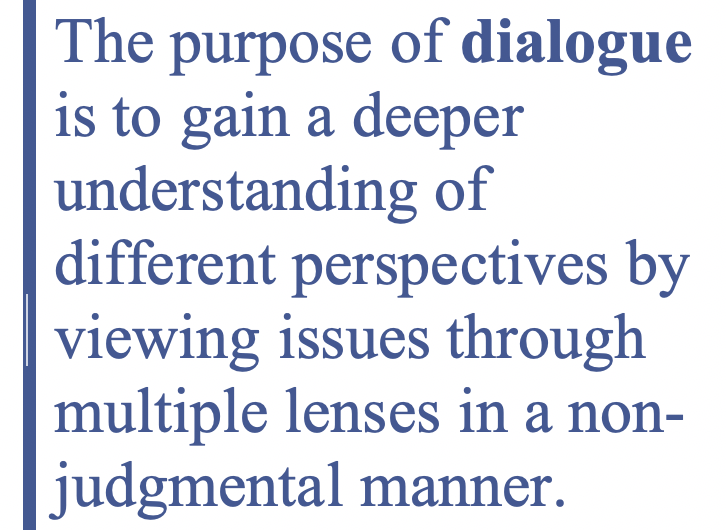
The purpose of dialogue, on the other hand, is to gain a deeper understanding of different perspectives by viewing issues through multiple lenses in a non-judgmental manner. It is designed to help students not only gain a greater understanding of the opinions of others but their own as well. They not only examine “what” different opinions are but also the root cause of “where” they come from and “why” we have them.

For centuries, dialogue has been acknowledged as an important form of communication when gaining a deeper understanding is the goal. Although originally attributed to the Greek philosopher Plato, many other contemporary thinkers have promoted and expanded upon this concept.
Boemian Dialogue, based on the work of theoretical physicist David Boem, poses that dialogue “is a freely flowing conversation in which participants attempt to reach a common understanding, experiencing everyone’s point of view fully, equally and non-judgmentally.” It is more concerned with the process of understanding than “winning.”
Noted Brazilian educator, philosopher and advocate of the oppressed Paulo Freire called for a form of dialogue where all voices are held in equal accord and people engage in a search for truth and understanding, as opposed to a process that is critical or contentious and where views that differ from one’s own are perceived as an imposition.
In his tome Pedagogy of the Oppressed Freire writes, “At the point of encounter there are neither utter ignoramuses nor perfect sages; there are only people who are attempting, together, to learn more than they now know.” He believed that engagement should be based on humility, love and an inherent trust in humanity.
At the point of encounter there are neither utter ignoramuses nor perfect sages; there are only people who are attempting, together, to learn more than they now know.
~Paolo Freire
When writing about humility, Freire poses the following questions:
- How can I dialogue if I always project ignorance onto others and never perceive my own?
- How can I dialogue if I consider myself a member of the in-group of “pure” men, the owners of truth and knowledge, for whom all not-members are “these people” or “the great unwashed”?
- How can I dialogue if I am closed to—and even offended by—the contribution of others?
- How can I dialogue if I am afraid of being displaced, the mere possibility causing me torment and weakness?
The American systems scientist and author Peter Senge writes that “one of the most reliable indicators of a team that is continually learning is the visible conflict of ideas.” He advocates for a balanced use of both dialogue and discussion as a way for groups of individuals to move beyond their individual perspectives to recognize that everyone is part of a single larger system.
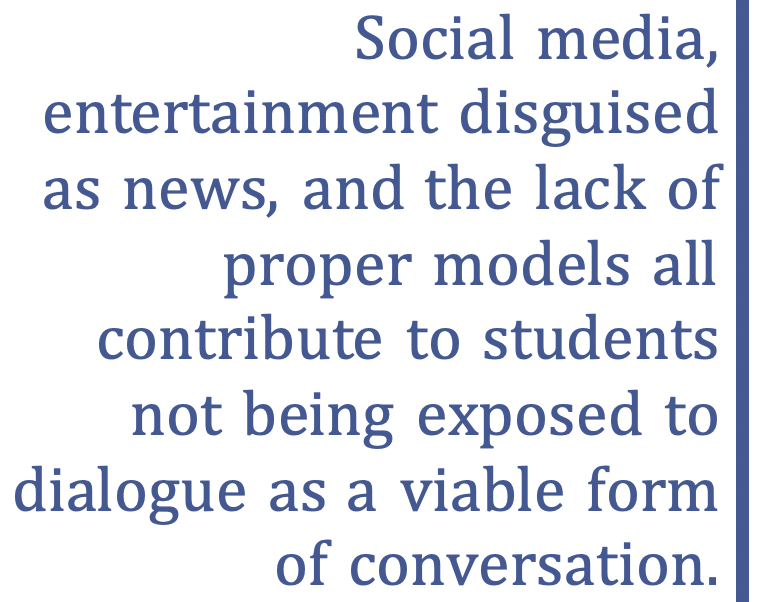
Teaching dialogue to today’s students is a challenge. Social media, entertainment disguised as news, and the lack of proper models all contribute to students not being exposed to dialogue as a viable form of conversation.
Furthermore, the ability to withhold one’s judgment requires tremendous effort.
The Benefits of Dialogue
However, the benefits of dialogue can be great. When students learn to dialogue, they learn:
- that in a society where all people are created equal, no one person’s viewpoint or opinion is more valuable than any other’s regardless of issues related to status such as gender, skin tone, socio-economic level or education.
- that our thoughts and beliefs are simply a result of our own individual experiences formed over the course of our lifetimes creating our own personal culture.
- to support their opinions with logic or reason and not to revert to attacks.
- to not be threatened by opinions that differ from their own.
- that opinions can be fluid and changed when other information becomes available.
- that diversity is not something that separates us but makes us stronger.
Considerations for Education
Here are a few considerations as we reflect on our task of preparing students to engage in our democracy and in an increasingly diverse nation and world.
- Actively promote the role education plays in sustaining our democracy, not just its economy.
- Encourage educators to understand dialogue, its purpose, its history and how it can be implemented in our classrooms.
- Encourage educators to model dialogue for their students through their own behaviors.
- Support all teachers—in all content areas—to read and understand their state’s English/Language Arts speaking and listening standard which outlines how students at each grade level should be taught to engage with diverse learners.
- Encourage heavy doses of cooperative learning in classrooms with an equal attention placed on the academic content and the process of working together.
- Ensure that students are exposed to books and articles that demonstrate the skills of compromise and collaboration.
Governing Ourselves
Securing our freedom depends largely upon our ability as a nation to govern ourselves individually and collectively. Teaching students how to communicate through dialogue has the potential to help students gain a deeper understanding of their beliefs and opinions as well as those of others.
Through this understanding—grounded in “humility,” “love” and “trust”—we will provide our students with the tools to engage with one another in a civil manner securing our democracy and the freedoms we cherish so much.
Boem, David. (2013) On dialogue. Abingdon, Oxon: Routledge.
Freire, P. (1972). Pedagogy of the oppressed. New York: Herder and Herder.
Senge, Peter M. (1990). The fifth discipline: the art and practice of the learning organization. New York: Doubleday/Currency.
For additional information, please visit Mark’s webpage.
Click here if you would like to sign up to receive future articles via email. Thank you.
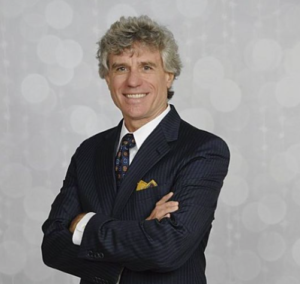
Mark Rolewski has spent over twenty years assisting school leaders and teachers in developing a deeper understanding of leadership and instruction and strengthening their skills in these areas. He works as a presenter and coach across North America and Internationally. Prior to launching his own firm, Mark was a teacher, principal, central office administrator and leadership consultant with the Success For All Foundation and the Center for Data-Driven Reform in Education at Johns Hopkins University.

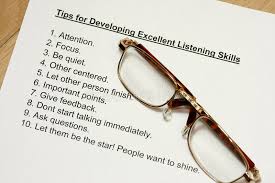



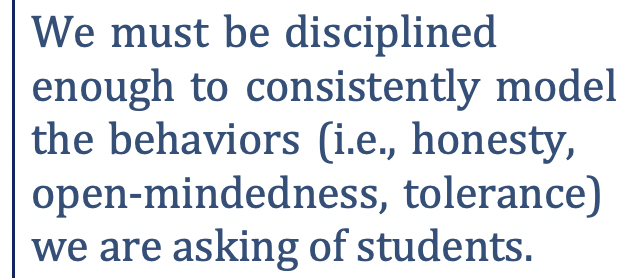


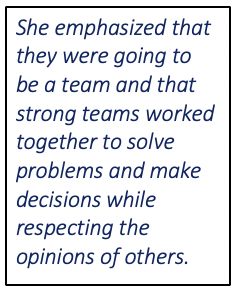
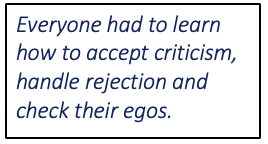



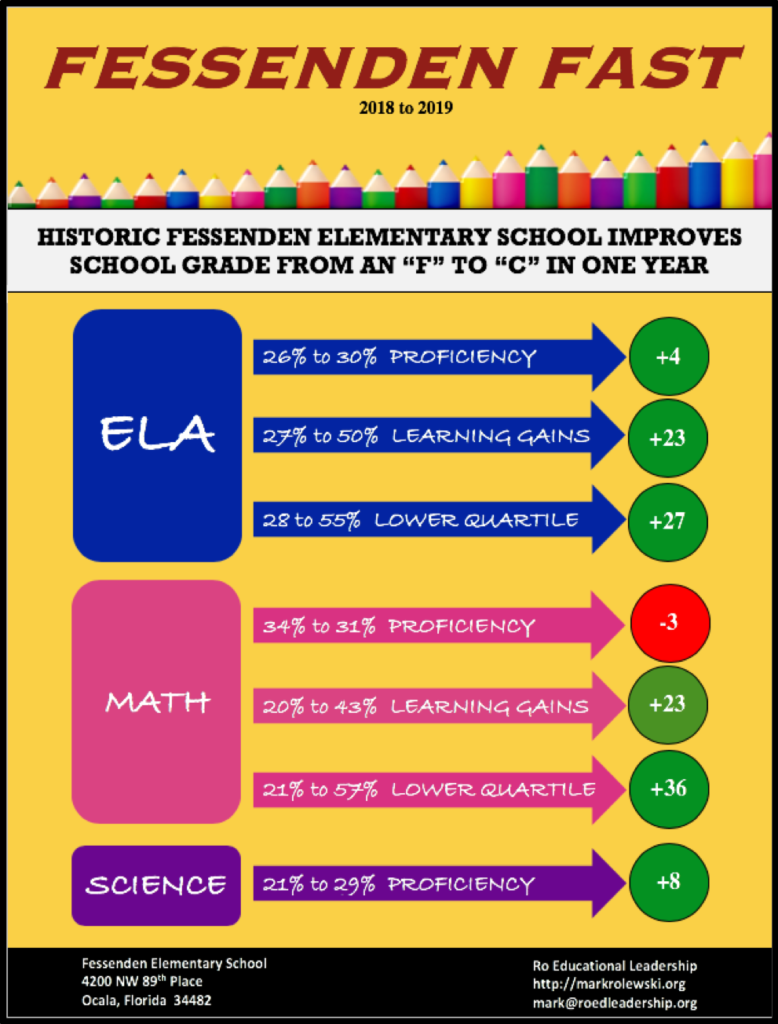
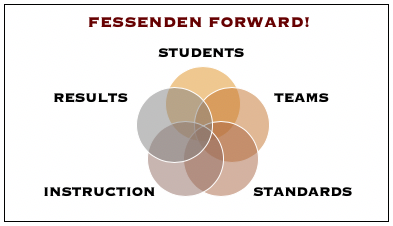

 one most important thing in school—student learning. However, with most schools already in session for nearly a month, many leaders still aren’t monitoring student learning as closely as they should.
one most important thing in school—student learning. However, with most schools already in session for nearly a month, many leaders still aren’t monitoring student learning as closely as they should.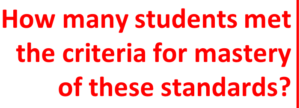 if student achievement is truly your number one priority and if it is, if your leadership aligns with that belief. In my experience, leaders who closely monitor the outcome—(student learning)—not just the process (e.g., checking lesson plans and walking through classrooms and providing feedback on instruction)—know the answer to these questions and so do their teachers.
if student achievement is truly your number one priority and if it is, if your leadership aligns with that belief. In my experience, leaders who closely monitor the outcome—(student learning)—not just the process (e.g., checking lesson plans and walking through classrooms and providing feedback on instruction)—know the answer to these questions and so do their teachers.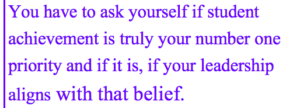 You simply can’t wait for an entire quarter for this information! While these types of measures are important and should be part of a school’s assessment palette, the results generated from such assessments should validate what you already know from the data you have been gathering all along.
You simply can’t wait for an entire quarter for this information! While these types of measures are important and should be part of a school’s assessment palette, the results generated from such assessments should validate what you already know from the data you have been gathering all along.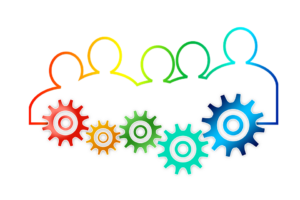 This is the time of year when leaders make their most important decisions. When it comes down to it, there are two critical factors that will determine the student achievement results for the upcoming year—teachers and teaching.
This is the time of year when leaders make their most important decisions. When it comes down to it, there are two critical factors that will determine the student achievement results for the upcoming year—teachers and teaching. Administrators know that if they are able to replace a less skillful teacher with a more skillful one, they upgrade the instruction in their school. Conversely, they know that if they replace a skillful teacher with a less skillful one, the overall quality of instruction decreases.
Administrators know that if they are able to replace a less skillful teacher with a more skillful one, they upgrade the instruction in their school. Conversely, they know that if they replace a skillful teacher with a less skillful one, the overall quality of instruction decreases. and outside the classroom. And, for a variety of reasons, behavior change is the most challenging of all as it requires us to learn new skills as opposed to relying on our habits.
and outside the classroom. And, for a variety of reasons, behavior change is the most challenging of all as it requires us to learn new skills as opposed to relying on our habits.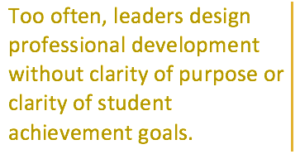 are the end and teaching is the means to that end. Too often, leaders design professional development without clarity of purpose or clarity of student achievement goals.
are the end and teaching is the means to that end. Too often, leaders design professional development without clarity of purpose or clarity of student achievement goals. important to the school and to establish a safe, nurturing and collaborative culture that encourages the behavior change that is necessary for schools to be successful.
important to the school and to establish a safe, nurturing and collaborative culture that encourages the behavior change that is necessary for schools to be successful. This time of year, I spend time with many principals asking them about their plans for the upcoming school year to strengthen the most important variable that increases student achievement—instruction. After all, it is the most critical time of the year for making the decisions that will ultimately determine the future success of a school. Miss this opportunity and you will have to wait another entire year for it to come around again.
This time of year, I spend time with many principals asking them about their plans for the upcoming school year to strengthen the most important variable that increases student achievement—instruction. After all, it is the most critical time of the year for making the decisions that will ultimately determine the future success of a school. Miss this opportunity and you will have to wait another entire year for it to come around again. tely, it often doesn’t. In this case, busyness becomes the illusion of change. Lots of excitement, materials, and initial training but ultimately little impact.
tely, it often doesn’t. In this case, busyness becomes the illusion of change. Lots of excitement, materials, and initial training but ultimately little impact.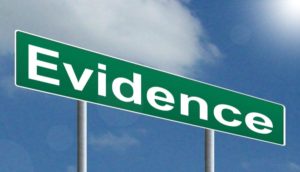 First, I’d like to congratulate you on your appointment as the United States Secretary of Education. I share with you the passion of influencing the lives of children through education. I am particularly ardent about providing educational opportunities for students who live in poverty.
First, I’d like to congratulate you on your appointment as the United States Secretary of Education. I share with you the passion of influencing the lives of children through education. I am particularly ardent about providing educational opportunities for students who live in poverty.